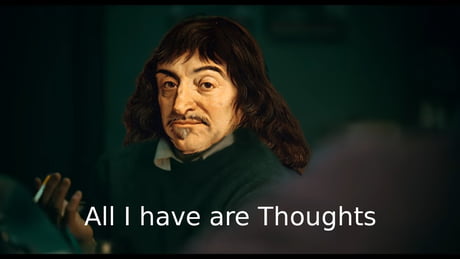Ellen Gwin
Dr. Anton Vander Zee
American Poetry Since 1945
6 September 2022
Becoming a Yes-Sayer
The Black Mountain Poets existed as “a group of interconnected poets, many of whom were connected together through Black Mountain College” (The Black Mountain Poets). Although the group did not identify under the title “The Black Mountain Poets” at the time, the term was later given to poets associated with Black Mountain College and the Black Mountain Review during this time period. Writers from this group found a sense of community important as they were experimenting with form and rhythm. Robert Creeley became connected to this group through teaching at the college as well as by becoming a sponsor and editor for the Black Mountain Review from 1954-1957. Alongside other Black Mountain poets, Robert Creeley found his interest in rhythm and breath rather than form (The Black Mountain Poets). Like some of the Beat Poets, Creeley found some of his inspiration for rhythm and breath through jazz (Nelson 274). In order to focus on rhythm he chooses a minimal, small verse as his signature style. Although Creeley is interested in rhythm, he often interrupts the rhythm or progress of his poem through the use of “hesitation, sudden wonder, or disabling pain” (Nelson 274). He uses imagery from the exterior world to reflect on his interior struggle.
In Robert Creeley’s “The Flower” the speaker states that they believe they grow tensions similar to how flowers grow in a forest that is not visited often. The speaker goes on to describe each wound as flawless, that each wound wraps itself in a flower, causing more pain. The speaker then says that their tensions are not just “like” flowers, but now the speaker’s pain is a flower. The speaker describes their flower as “like that one, / like this one, / like that one, / like this one” (Nelson 274).
Just as Nelson described, Creeley’s poem focuses on rhythm rather than form. Although the poem contains three stanzas with four lines per stanza, there’s no rhyme scheme, the length of each line varies, and a lack of meter exists. He uses the varying line-lengths in order to create a sense of rhythm more akin to conversations or a coffee shop reading. In the first stanza the only punctuation marks are the period at the end. As the speaker goes deeper into the metaphor of the flower as pain, more commas, or interruption of rhythm as Nelson refers to them as, get added. In the second stanza a comma is placed in every other line before ending the stanza with a period. In the final, third stanza commas sit at the end of each line before the stanza ends with a period. Also, in the last stanza the poet uses repetition for the first time in the poem causing a further sense of interruption. Creeley uses the punctuation to cause interruptions in moments surrounding pain as a way of drawing the readers’ attention to the topic as it pertains to the flower. He wants the reader to glean upon the interior thought, pain of growth, by focusing on the exterior image, the flower growing in the woods.
The speaker begins the poem with the words “I think,” reminiscent of Descartes’ famous quote “I think therefore I am.” This idea sits nicely with the idea of growth as a flower’s only job in order to be. In this poem, an idea exists that when the speaker thinks, they grow and that growth causes pain, indicating that being is a hardship in itself. The two lines say “I think I grow tensions / like a flower” (Nelson 275). Here, the speaker compares their ability to think and the subsequent wounds that causes to that of the growth of a flower. In the next two lines, the speaker states the flower is “in a wood where / nobody goes” (Nelson 275). This idea of the woods as a place where no one enters points to the speaker’s mind as a place where they can think and grow their thoughts in privacy, perhaps even implying the speaker does not tread into their own mind often.
The second stanza further solidifies the idea introduced in stanza one: to think is to grow, to grow is pain. In the second stanza, the tension becomes a visible wound according to the speaker. This is the point in the poem where the pain and the flower begin to mesh into one another. The wound gets wrapped by a flower, becoming inaccessible, causing more pain. In this stanza, the speaker becomes unable to access their thoughts in order to be, causing growing pains for the speaker.
In stanza one the flower and the pain appear as separate, juxtaposed images, in the second stanza the flower and pain become intertwined, while in the third stanza the flower and the pain become one in the same. The speaker emphasizes that the flower and pain are one by repeating “like this one, / like that one” (Nelson 275). By the end of the poem, there seems to be acceptance of pain and growth as a part of reality of thinking and therefore being also through the repetition of “like this one, / like that one” (Nelson 275).
For my photos I felt a series of Descartes memes seemed appropriate. While the memes are funny they do reveal some truths and flaws behind some of his thinking.

Rene Descartes Everybody by “bibleoffun” on 9gag

René Descartes Inspirational Posts by circorum on 9gag

My question for the class is: How do y’all think the idea of “I think therefore I am” fits into this poem? Do you think it fits at all? Why or why not?
Works Cited
Bibleoffun. Rene Descarte Everybody. 2 Dec. 2017.
Circorum. René Descartes. 2 February 2020.
Nelson, Cary. Contemporary American Poetry. Second ed., Two, Oxford University Press, 2015.
Me_irl. 1 December 2021.
“The Black Mountain Poets.” The Poetry Foundation, Poetry Foundation,
https://www.poetryfoundation.org/collections/151709/an-introduction-to-the-black-mountain-school.
No comments yet.